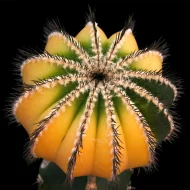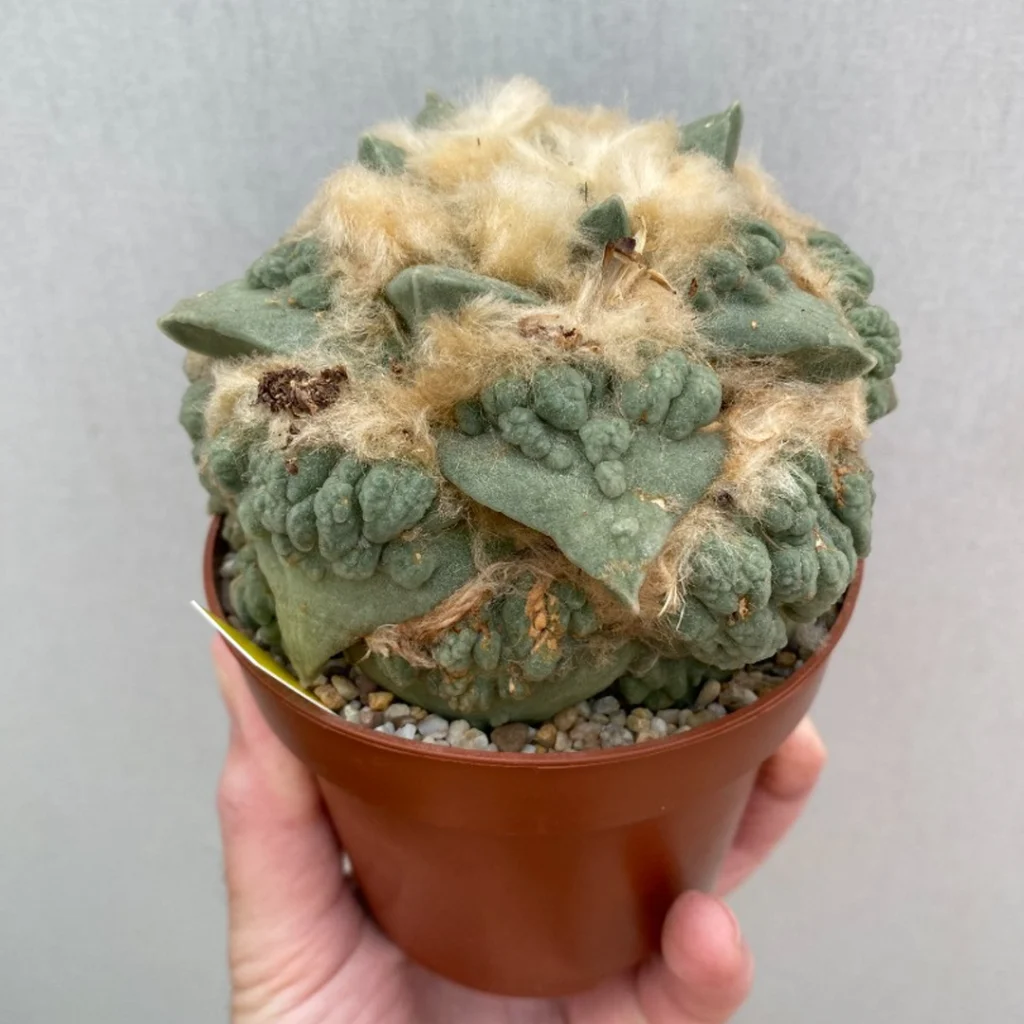Uebelmannia pectinifera ‘Variegated’ is a stunning and rare variation of the classic Uebelmannia pectinifera, celebrated for its striking variegation. This cactus exhibits a mix of green, yellow, and creamy white patches across its columnar body, creating an eye-catching contrast. The variegation highlights its prominent ribs and the dense, comb-like spines that give it a textured appearance.
Native to the rocky terrains of Brazil, Uebelmannia pectinifera ‘Variegated’ is highly sought after by collectors for its uniqueness and ornamental value. During its growing season, it may produce small yellow flowers, adding a delicate charm to its bold structure.
Care Tips:
- Light: Provide bright, indirect sunlight. Direct sun is suitable but avoid harsh midday rays, as the variegated areas are more prone to sunburn.
- Watering: Water sparingly, allowing the soil to dry completely between waterings. Reduce watering in winter dormancy.
- Soil: Use a fast-draining cactus mix with added sand or pumice to prevent root rot.
- Temperature: Prefers temperatures between 20°C to 35°C (68°F to 95°F). Keep above 10°C (50°F) and protect from frost.
- Fertilizer: Feed with a diluted cactus fertilizer monthly during spring and summer. Avoid over-fertilization to maintain healthy variegation.
- Repotting: Handle carefully when repotting to avoid damaging the roots and the delicate variegated areas. Repot every 3-4 years.
- Propagation: Challenging to propagate due to its variegated nature. Grafting onto a robust rootstock is the preferred method.























